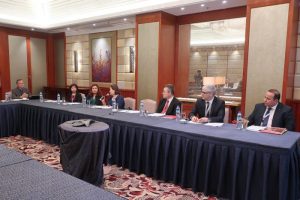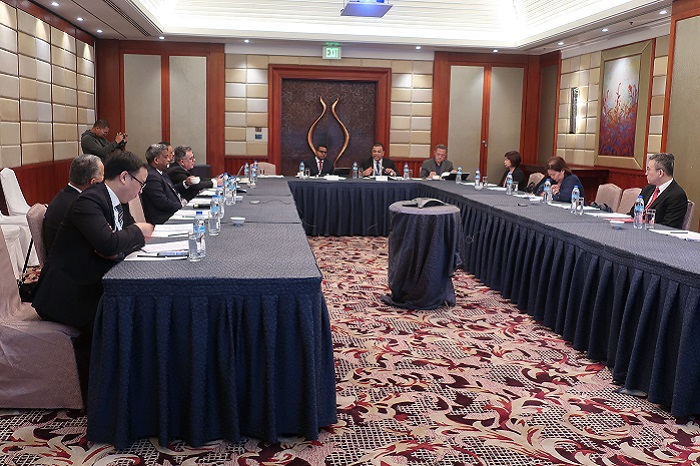Promoting and Actualizing Blended Finance in Asia and the Pacific
(1) Blended finance is emerging as a critical tool in financing initiatives and activities that contribute to the delivery of the sustainable development goals (SDGs), particularly in developing countries.
(2) In a nutshell, blended finance is the strategic use of development finance – including concessional funding and funds from philanthropic sources and capital markets – for the mobilization of additional finance to increase private sector investment towards achieving sustainable development goals in developing countries.1
 (3) The United Nations Conference on Trade and Development in 2017 estimates a US$2.5 trillion gap annually to finance the SDGs. OECD DAC report shows that in 2016, the total official development assistance (ODA) reached only $142.6 billion which is much smaller than the needs. The World Bank estimates that governments can cover from 50% to 80% of the annual requirement.2 The remaining 20% to 50% will be sourced from private funds and private capital or a blend of private funds, philanthropic funds, and ODA.
(3) The United Nations Conference on Trade and Development in 2017 estimates a US$2.5 trillion gap annually to finance the SDGs. OECD DAC report shows that in 2016, the total official development assistance (ODA) reached only $142.6 billion which is much smaller than the needs. The World Bank estimates that governments can cover from 50% to 80% of the annual requirement.2 The remaining 20% to 50% will be sourced from private funds and private capital or a blend of private funds, philanthropic funds, and ODA.
(4) Blended finance has proved to be a good enabling tool for SDG financing, and banks and other financial institutions – particularly development finance institutions (DFIs) – play a significant role in this. By their very nature, DFIs are institutions established by governments to invest in projects with development t impact, even in otherwise risky sectors, while achieving the triple bottom line – economic, environment and social. DFIs can start, structure, and manage sustainable development projects related to agriculture, energy, waste management, environmental protection, health, and infrastructure, among others.
(5) With blended financing from ODA, philanthropic funds, guarantees or other sources to share project risks, DFIs are encouraged to finance SDGs activities in developing countries. Multilateral DFIs like the International Finance Corporation (IFC) and the African Development Bank (ADB) have structured blended finance in their activities in developing countries. Their experiences established proof-of concept to demonstrate that blended finance, as a catalytic strategy, is needed to penetrate risky sectors, create markets, and broaden financial inclusion. DFIs can balance social good with profit, drawing from their business sense and acuity, thus encouraging the private sector to invest in priority SDG areas. These are the areas that ADFIAP and its member-DFIs have been working on and advocating for in the region.
(6) In this regard, the Asian Bankers Association (ABA) proposes that a blended finance facility for the Asia-Pacific region (BFFAP) be set up in partnership with a DFI such as the Association of Development Financing Institutions in Asia and the Pacific (ADFIAP). The ABA believes it is a timely initiative envisioned to provide countries in the region with financial support and technical advisory for their SDG projects and programs as well as a regional platform for knowledge exchange. Financing at a regional or at a scaled-up level will lead to systemic and more significant impacts and outcomes.
(7) Further, a regional facility such as the BFFAP can leverage a wider source of capital by accessing available financing in different countries. The BFFAP aims to partner also with philanthropic institutions and other financial institutions, including commercial banks, and “crowd-in” private sector investment to help countries meet their SDGs.
(8) The proposed BFFAP can focus on specific SDG priority projects that: (a) address issues that are interconnected or have direct regional impact such as forest fires or marine litter, (b) issues that are being experienced across the region like extreme weather events, or (c) most pressing local issues.
(9) Technical advisory and financing are also essential components of a blended finance package. The BFFAP advisory can be provided for the following:
- Product understanding
- Pipeline development of bankable projects
- Product development customized according to project or sector needs
- Shared financing and credit risk enhancement
- Organizational restructuring and capacity building; include mainstreaming of green finance into all financing and investment activities
- Government policy development of green policy measures
- Monitoring and impact evaluation
(10) A blended finance facility for Asia and the Pacific will address financing, and knowledge and technology gaps. This will also facilitate financing of pioneering, catalytic, and transformational investments in risky sectors while ensuring the realization of the triple bottom line.
Prepared for ABA by:
The Association of Development Financing Institutions in Asia and the Pacific (ADFIAP)
36th ABA General Meeting and Conference
November 14, 15, 2019, Makati City, Philippines
Footnote:
1 As defined by Convergence, the global network for blended finance; International Finance Corporation, the private investment arm of the World Bank, and OECD.
2 Impact investment to close the SDG funding gap (2017), www.undp.org

